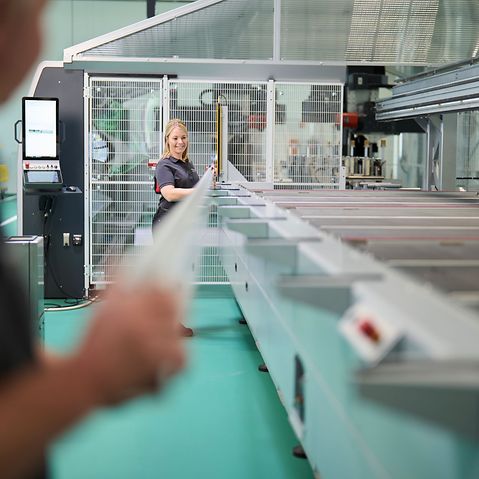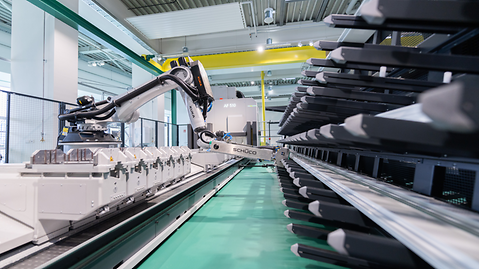
Demographic change
Demographic change? Let's face it together.
According to estimates by the German government, Germany's current working population of 50 million is set to decrease to just 26.5 million in 2050. Seven million of those will have retired by as soon as 2025. The consequences of demographic change pose different challenges to every company and require individual solutions. Implementing diverse automation technologies and ergonomic workplaces is the most efficient and sustainable approach to creating the production landscape of the future.
Schüco offers support in this respect to help accelerate your growth and combat the effects of demographic change on your business.

"The quicker you introduce automation and ergonomics into your business, the better equipped you are to work more efficiently and to combat demographic change in the long term."
Olaf Pantel, Head of Fabrication Products, Schüco International KG
Effects for metal fabrication
Demographic change will have a strong impact on the job market and the metal fabrication industry. As the population ages, there will be fewer people fit to work. As a result, there will be fewer competent workers, making it harder for companies to fill highly sought positions. The consequences of demographic change will also be felt in other areas of the company:
- Reduced productivity
- Increased labour costs
- Delayed company expansion
- Reduced competitiveness
How you can combat demographic change
In order to prevent a lack of skilled workers, metal fabrication companies need to maintain the health, knowledge and motivation of their existing employees while simultaneously positioning themselves as an attractive employer for young jobseekers. As a metal fabricator, you have various tools available to set your company up well for the future.
Automation solutions by Schüco
The degree of automation needs to accelerate as the population ages. Robots will be used more and more in areas where the population is significantly older in order to fill industrial positions. Schüco offers appropriate solutions to take these future-oriented steps and combat demographic change. By automating your processes, you can reduce your personnel requirements and ensure your existing employees have time for the more important and meaningful tasks which require human creativity and intelligence. Contact us to talk about the processes you can automate with Schüco machines now.
Demographic change: the facts and figures
What is the definition of demographic change?
What is the definition of demographic change?
Global wealth and medicinal improvements have raised life expectancy across the world. At the same time, birth rates have decreased globally, particularly in industrialised and developing countries. According to estimates, 20% to 30% of the population in many countries will be 65 or older by 2060.
Demographic change is defined as any change to the population with regard to average age, old age dependency ratio, life expectancy, family structures, birth rate etc.
Demographic change can impact the basic economic growth rate, structural productivity growth, living standards, savings rate, consumption and investments. It can also influence the long-term unemployment rate, market trends and the demand for financial assets.
How is the demographic changing in Germany?
How is the demographic changing in Germany?
Low birth rates and a shrinking population are the key factors of demographic change in Germany.
Germany's population has been shrinking since 2003 and is currently at 81.7 million. This population decline is due to a higher number of deaths than births – and the situation is accelerating.
According to estimates from the German Federal Statistical Office, Germany's population will have declined to around 65 to 70 million people by 2060. The population could decrease by up to 17 million, that is 15 to 21%, in the next 50 years. The proportion of older adults will dramatically increase within the next two decades, which will lead to a lack of qualified workers.
Today, the proportion of children and teenagers under 20 is almost as large as the number of adults over 65. By 2030, the proportion of over-65s will be around 29% and by 2060 one in three of the population (34%) will be over 65.


